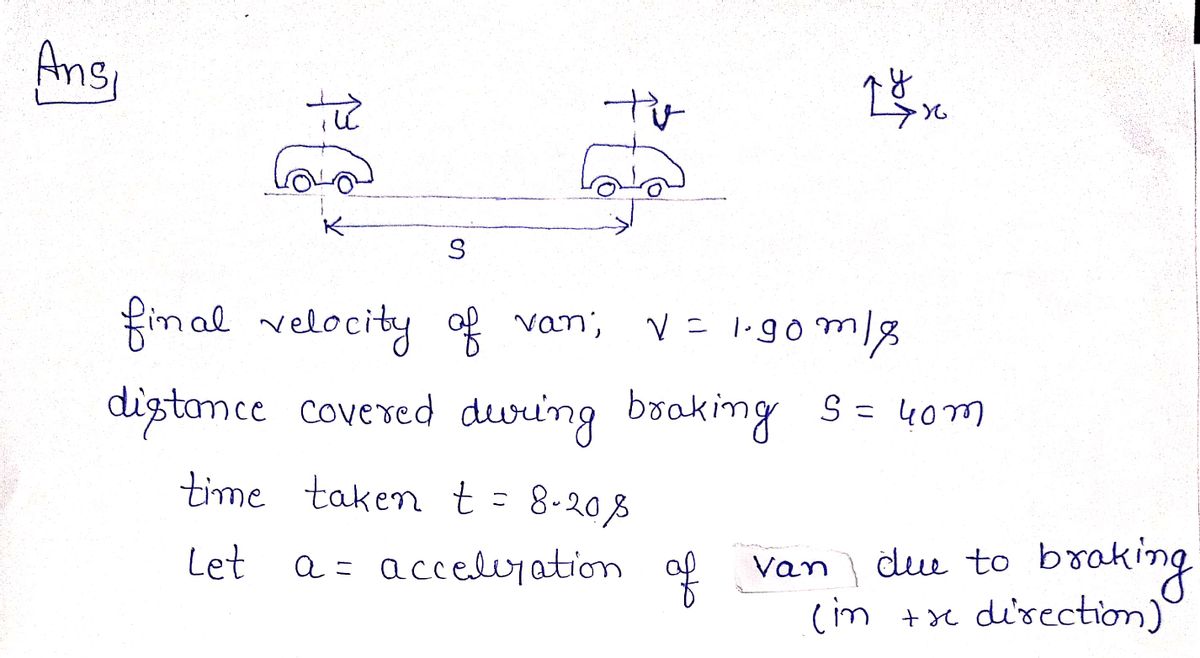The brakes are applied to a moving van, causing it to uniformly slow down. While slowing, it moves a distance of 40.0 m in 8.20 s to a final velocity of 1.90 m/s, at which point the brakes are released. (a) What was its initial speed (in m/s), just before the brakes were applied? m/s (b) What was its acceleration (in m/s2) while the brakes were applied? (Assume the initial direction of motion is the positive direction. Indicate the direction with the sign of your answer.) m/s²
Displacement, Velocity and Acceleration
In classical mechanics, kinematics deals with the motion of a particle. It deals only with the position, velocity, acceleration, and displacement of a particle. It has no concern about the source of motion.
Linear Displacement
The term "displacement" refers to when something shifts away from its original "location," and "linear" refers to a straight line. As a result, “Linear Displacement” can be described as the movement of an object in a straight line along a single axis, for example, from side to side or up and down. Non-contact sensors such as LVDTs and other linear location sensors can calculate linear displacement. Non-contact sensors such as LVDTs and other linear location sensors can calculate linear displacement. Linear displacement is usually measured in millimeters or inches and may be positive or negative.


Step by step
Solved in 2 steps with 2 images









